[av_slideshow_full size=’no scaling’ stretch=” animation=’fade’ autoplay=’false’ interval=’5′ control_layout=’av-control-default’ src=” attachment=” attachment_size=” position=’top left’ repeat=’no-repeat’ attach=’scroll’]
[av_slide_full slide_type=’image’ id=’59951′ video=” mobile_image=” video_format=” video_ratio=” title=’Profile: Giuseppe Chiari’ custom_title_size=’48’ custom_content_size=’20’ caption_pos=’caption_center’ link_apply=” link=’lightbox’ link_target=” button_label=” button_color=’light’ link1=’manually,http://’ link_target1=” button_label2=” button_color2=’light’ link2=’manually,http://’ link_target2=” font_color=’custom’ custom_title=’#efefef’ custom_content=’#050505′ overlay_enable=’aviaTBaviaTBoverlay_enable’ overlay_opacity=’0.1′ overlay_color=’#444444′ overlay_pattern=” overlay_custom_pattern=”]
BY SILVIA ANNA BARRILA
[/av_slide_full]
[/av_slideshow_full]
[av_textblock size=” font_color=’custom’ color=’#ffffff’]
Giuseppe Chiari, ‘Collage 8 carte,’ 1981, collage on canvas, 27.6in x 39.4in. Courtesy Tornabuoni Art.
[/av_textblock]
[av_section min_height=” min_height_px=’500px’ padding=’default’ shadow=’no-border-styling’ bottom_border=’no-border-styling’ id=” color=’main_color’ custom_bg=’#f2f2f2′ src=” attachment=” attachment_size=” attach=’scroll’ position=’top left’ repeat=’no-repeat’ video=” video_ratio=’16:9′ overlay_opacity=’0.5′ overlay_color=” overlay_pattern=” overlay_custom_pattern=”]
[av_one_full first min_height=” vertical_alignment=’av-align-top’ space=” margin=’0px’ margin_sync=’true’ padding=’10px,20px,10px,20px’ border=’1′ border_color=’#eaeaea’ radius=’0px’ radius_sync=’true’ background_color=’#ffffff’ src=” attachment=” attachment_size=” background_position=’top left’ background_repeat=’no-repeat’]
[av_hr class=’invisible’ height=’20’ shadow=’no-shadow’ position=’center’ custom_border=’av-border-thin’ custom_width=’50px’ custom_border_color=” custom_margin_top=’30px’ custom_margin_bottom=’30px’ icon_select=’yes’ custom_icon_color=” icon=’ue808′ font=’entypo-fontello’]
[av_textblock size=” font_color=” color=”]
PARIS – Born in Florence in 1926, Giuseppe Chiari studied engineering before beginning his career as a pianist. He gave concerts characterized by an experimental approach and influenced by jazz and by the avant-garde compositions of American John Cage.
[/av_textblock]
[av_hr class=’invisible’ height=’20’ shadow=’no-shadow’ position=’center’ custom_border=’av-border-thin’ custom_width=’50px’ custom_border_color=” custom_margin_top=’30px’ custom_margin_bottom=’30px’ icon_select=’yes’ custom_icon_color=” icon=’ue808′ font=’entypo-fontello’]
[av_textblock size=’16’ font_color=’custom’ color=’#686868′]
“In the early 1960s, Giuseppe Chiari did what might be defined as his artistic statement by putting a pair of scissors on his piano at the end of a concert,” said Michele Casamonti, gallery-owner of Tornabuoni Art in Paris. His gallery has represented Giuseppe Chiari at the international level since the 1980s, when Casamonti’s father, Roberto Casamonti, founder of Tornabuoni Arte in Florence, met the artist, began to collect his work and then became his friend and art dealer.
“From this act, it came out what Chiari called ‘action music,’ a musical movement that combined traditional instruments with objects and sounds from the everyday life,” said Michele Casamonti.
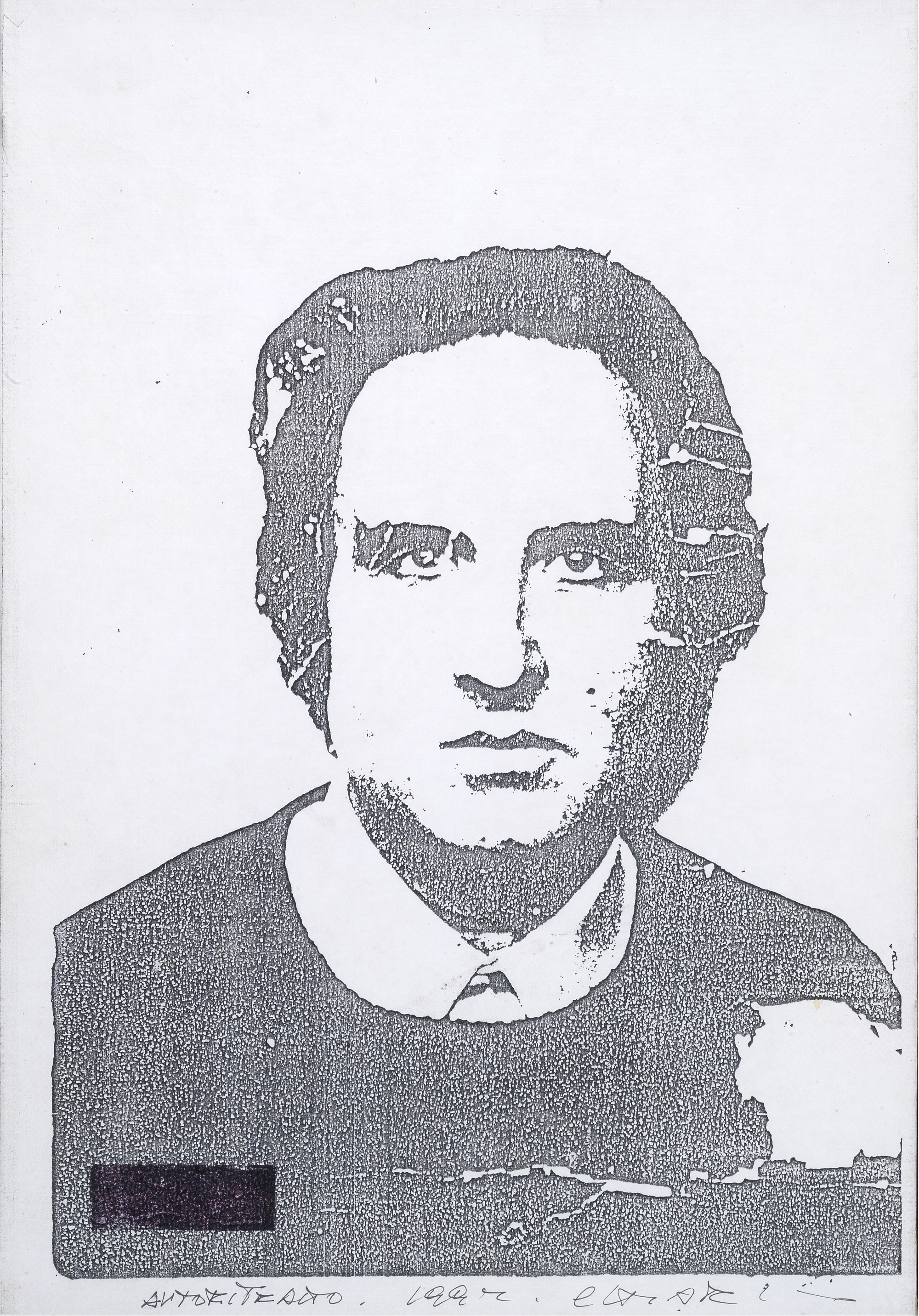
Giuseppe Chiari’s art aimed at the reunion of the arts and at overcoming the barriers between music, theater and visual arts. In practice, this meant the creation of works composed of painted scores that make the music not only audible, but also visible and intuitively perceivable by anyone who watches the works. In addition to his performances and the painted scores, Chiari worked also with collage – both on paper and on the instruments – and with writing. He produced several artists’ books, as well, such as Music without counterpoint, from 1969, or Method to play, from 1976.
In 1962 he participated in the exhibition “Fluxus Festspiele internationale Neuester Musik” in Wiesbaden, Germany, and became part of the Fluxus group. This gave an international dimension to his production and encouraged his experimentation in the direction of anti-technique and anti-art. The following year, Chiari became a member of Group 70 in Florence, whose experimentations were interdisciplinary and lead to the so-called “Visual poetry.”
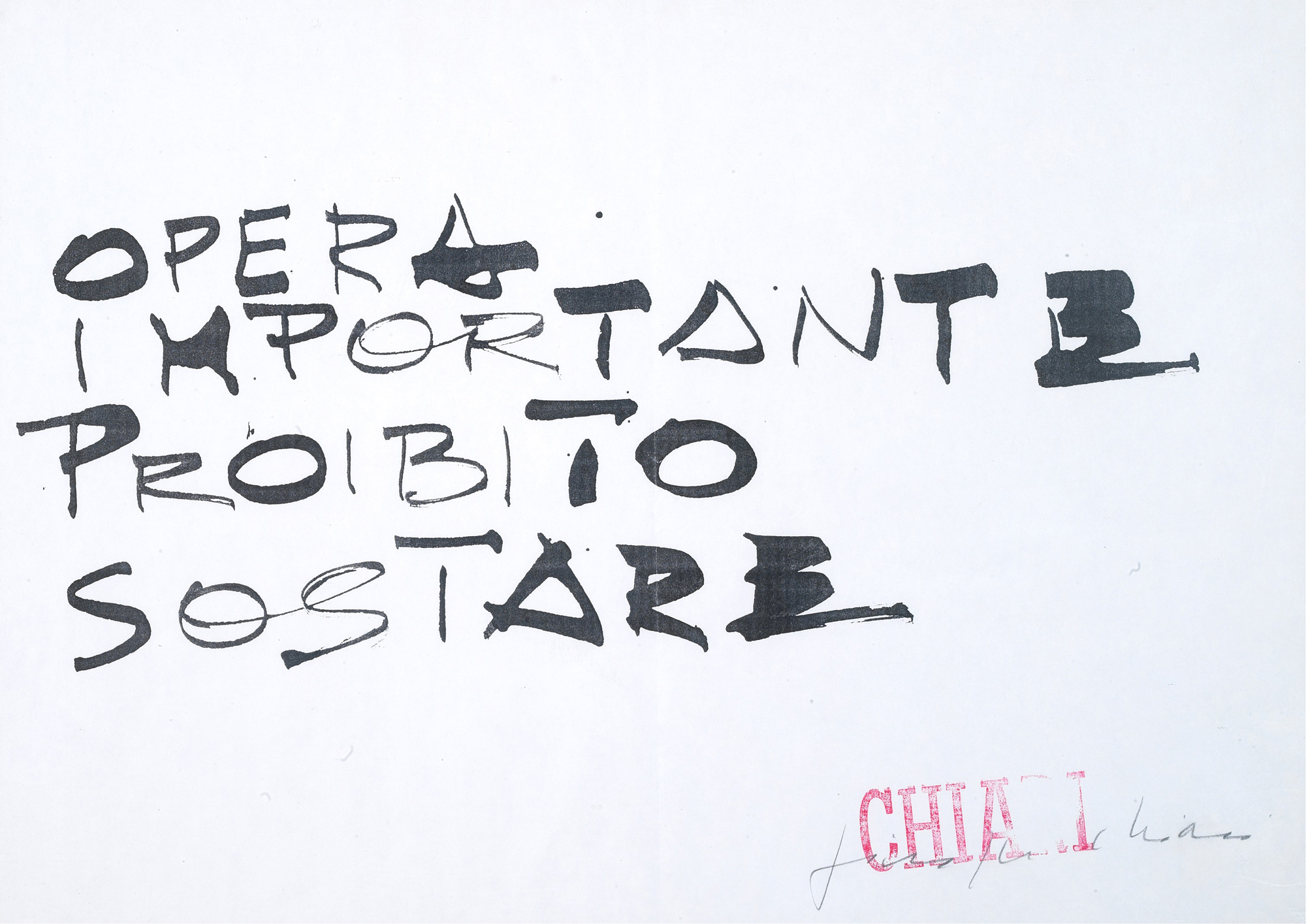
“The year 1972 was a milestone in the career of Giuseppe Chiari,” said Casamonti, “with the first of his three participations in the Venice Biennale and his presence at Documenta in Kassel. But Giuseppe Chiari himself stated that the most memorable moment in his artistic career was simply his improvisation on the piano at Museo Pecci in Prato in 1990.”
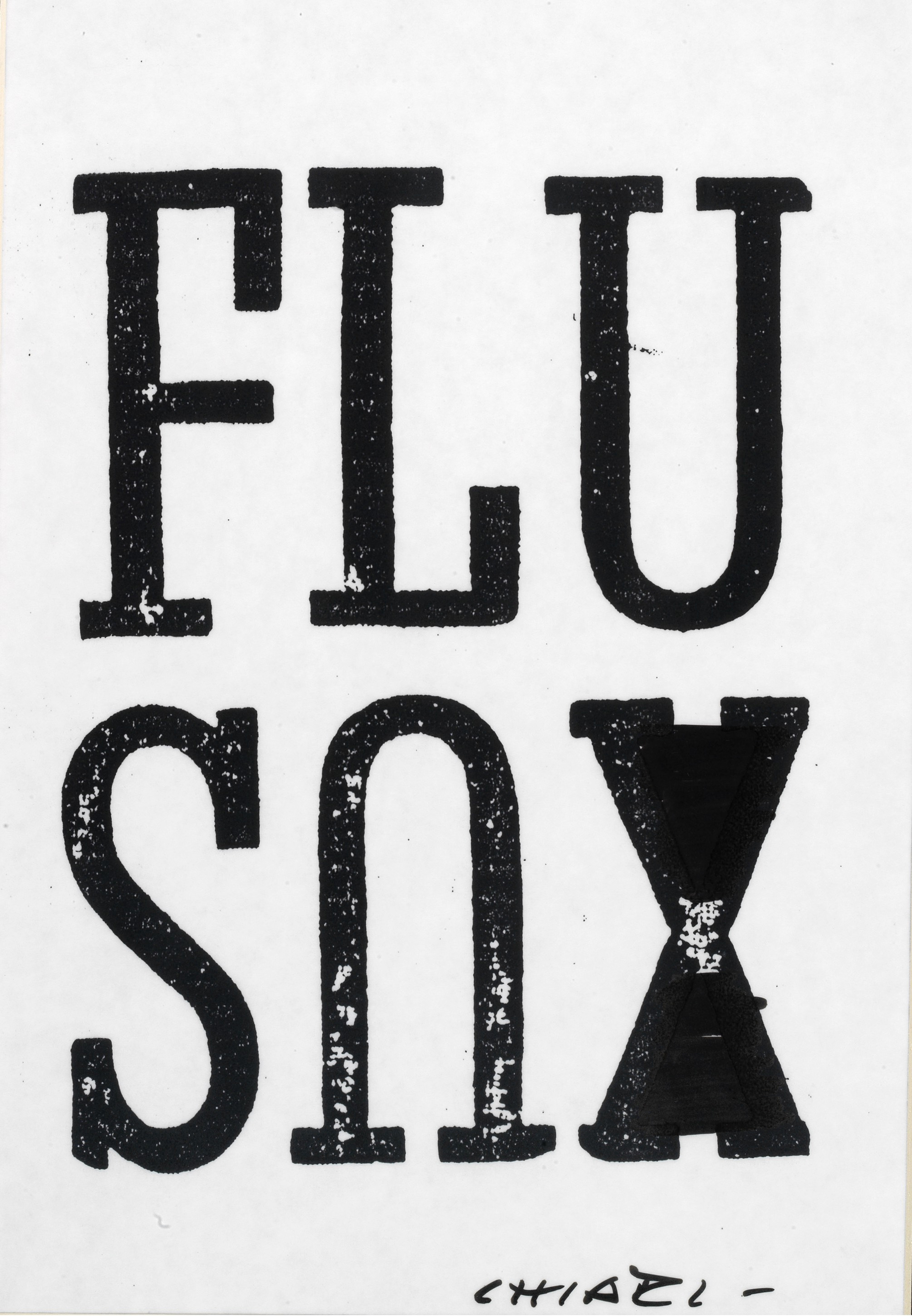
But where does the importance of Giuseppe Chiari in the history of art come?
“Chiari was, together with Maurizio Nannucci, one of only two Italian artists belonging to the Fluxus movement, which was at the forefront of international art from the 1960s to 1990s,” said Casamonti. “Giuseppe Chiari was also a pioneer of ‘action music.’ He transformed his concerts in performances, which were more often presented in galleries and museums, than in concert halls. Chiari proposed a new approach to language, in which the arts meet the senses; an intuitive and expressive language that he wanted to make accessible to all. He was an artist who knew how to play with the codes of art, making it interdisciplinary.”
[/av_textblock]
[av_hr class=’invisible’ height=’50’ shadow=’no-shadow’ position=’center’ custom_border=’av-border-thin’ custom_width=’50px’ custom_border_color=” custom_margin_top=’30px’ custom_margin_bottom=’30px’ icon_select=’yes’ custom_icon_color=” icon=’ue808′ font=’entypo-fontello’]
[av_heading tag=’h3′ padding=’10’ heading=’“Chiari believed that culture should not be bought or sold, so he often gave away his works, or sold them at low prices.”’ color=” style=’blockquote classic-quote’ custom_font=” size=’44’ subheading_active=” subheading_size=’15’ custom_class=”][/av_heading]
[av_hr class=’invisible’ height=’50’ shadow=’no-shadow’ position=’center’ custom_border=’av-border-thin’ custom_width=’50px’ custom_border_color=” custom_margin_top=’30px’ custom_margin_bottom=’30px’ icon_select=’yes’ custom_icon_color=” icon=’ue808′ font=’entypo-fontello’]
[av_textblock size=’16’ font_color=’custom’ color=’#686868′]
From the point of view of the market, Chiari’s position is not easy, given the importance of performance in his production and the conceptual value of his works. Chiari also believed that culture should not be bought or sold, so he often gave away his works, or sold them at low prices. Only after his death, which happened in Florence in 2007, the market has turned its attention to this artist, but much remains to be done until he is rightly recognized. At auction his works are sold to a few thousand euros, while in private sales his works achieve tens of thousands of euro.
“Chiari’s value is very underestimated, especially when compared to the value of the works of other members of Fluxus – like Beuys, Spoerri, and even Nannucci,” Casamonti said. “While he was alive, the musical performances raised greater enthusiasm, while today I would say the public feels more affinity for his scores, which are expressively painted and blemished. Perhaps because, through colors and movement, Chiari allows the viewer to feel the music with his eyes, rather than make it illegible, even if the person cannot read the notes. I think that it is this almost instinctive understanding of the work that attracts the audience.”
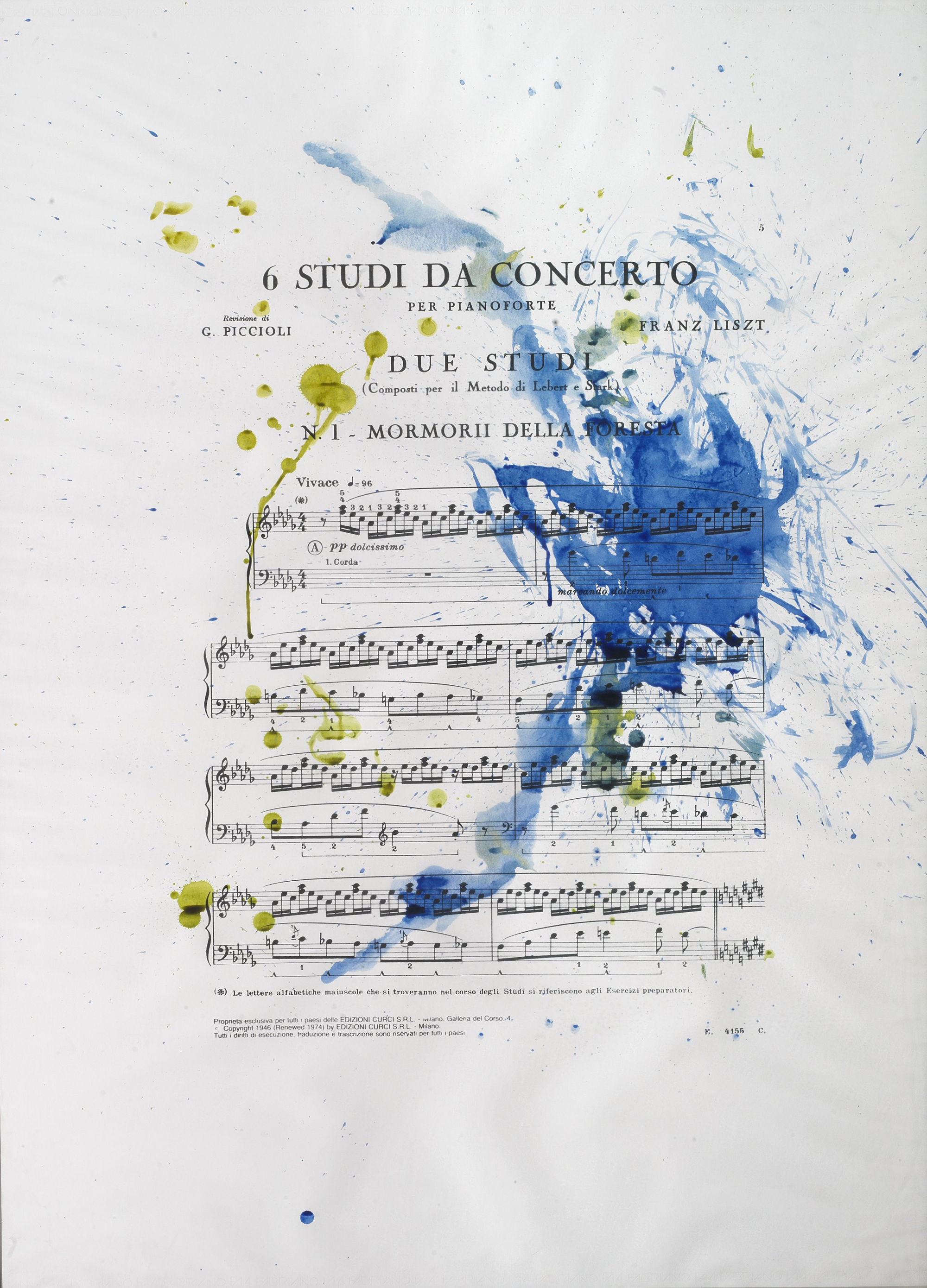
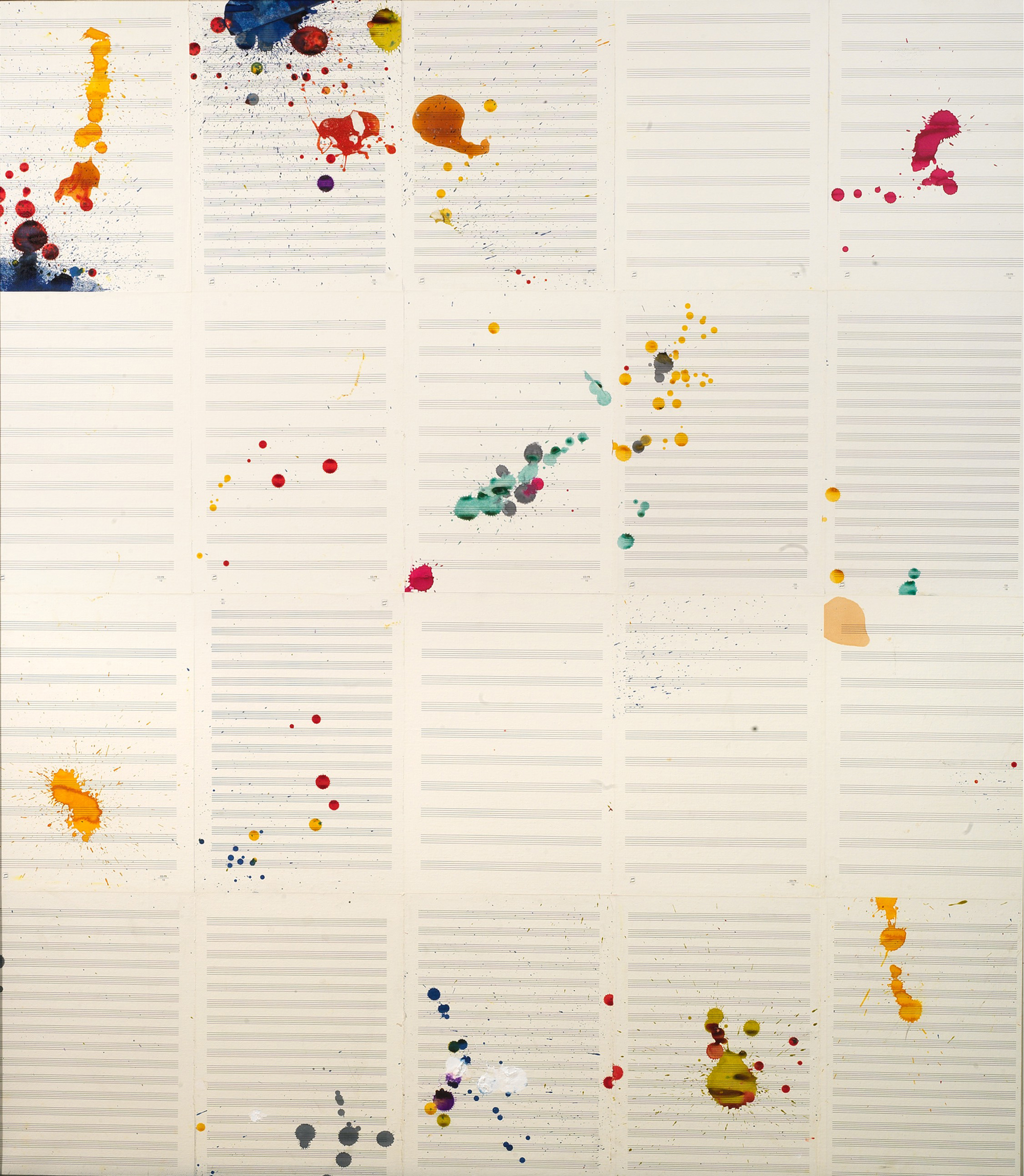
The international market of Chiari is still not very developed, although his works are also preserved at MoMA in New York and at Museo Cantonale d’Arte in Lugano. “The demand today remains mainly restricted to Italy. Maybe because Chiari did not like to travel, apart from when he traveled for his performances,” said Casamonti.
The most complete catalog of Chiari’s work was published by Tornabuoni Arte in 2012 in collaboration with the archive of Giuseppe and Victoria Chiari from Florence. Tornabuoni Art in Paris is dedicating an exhibition to Giuseppe Chiari through Sept. 30.
[/av_textblock]
[/av_one_full][/av_section][av_one_full first min_height=” vertical_alignment=’av-align-top’ space=” margin=’0px’ margin_sync=’true’ padding=’80px,40px,80px,40px’ border=’1′ border_color=’#eaeaea’ radius=’0px’ radius_sync=’true’ background_color=’#ffffff’ src=” attachment=” attachment_size=” background_position=’top left’ background_repeat=’no-repeat’]
[av_textblock size=” font_color=” color=”]
 About Silvia Anna Barrila
About Silvia Anna Barrila
Silvia Anna Barilla is an Italian fine arts journalist and regular contributor to the Italian financial newspaper Il Sole 24 ORE (ArtEconomy24). She also writes about art, design, lifestyle and society for a number of Italian and international magazines, including DAMn Magazine and ICON (Mondadori). She is based in Milan and Berlin.
[/av_textblock]
[/av_one_full]
[av_hr class=’invisible’ height=’50’ shadow=’no-shadow’ position=’center’ custom_border=’av-border-thin’ custom_width=’50px’ custom_border_color=” custom_margin_top=’30px’ custom_margin_bottom=’30px’ icon_select=’yes’ custom_icon_color=” icon=’ue808′ font=’entypo-fontello’]
[av_one_fifth first min_height=” vertical_alignment=” space=” custom_margin=” margin=’0px’ padding=’0px’ border=” border_color=” radius=’0px’ background_color=” src=” background_position=’top left’ background_repeat=’no-repeat’][/av_one_fifth]
[av_four_fifth min_height=” vertical_alignment=” space=” custom_margin=” margin=’0px’ padding=’0px’ border=” border_color=” radius=’0px’ background_color=” src=” background_position=’top left’ background_repeat=’no-repeat’]
[av_sidebar widget_area=’SCM – 728×90 – footer’]
[/av_four_fifth]



